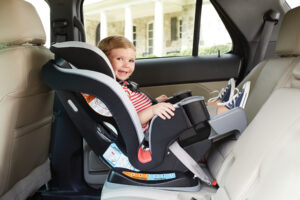
Why Rear-Facing is Safer
- Better Protection in Crashes – In the event of a collision, a rear-facing seat absorbs the impact, distributing the force across the child’s back, neck, and head. This reduces the risk of serious injuries, particularly to the neck and spine.
- Supports Developing Bodies – Babies and toddlers have relatively weak neck muscles and a still-developing spine. Facing backward allows the seat to provide necessary support, minimizing strain and preventing severe whiplash-like injuries.
- Lower Risk of Fatalities – Studies show that children in rear-facing car seats are significantly less likely to be seriously injured or killed in car crashes compared to those who transition to forward-facing too soon.
When to Switch to Forward-Facing
Parents should keep their child rear-facing until they exceed the seat’s height or weight limits. Many modern convertible car seats accommodate rear-facing children up to 40-50 pounds, allowing them to stay safer for longer.
By prioritizing extended rear-facing seating, parents can give their little ones the best possible protection on the road. Safety should always come first, and delaying the transition to forward-facing can be a lifesaving decision.
